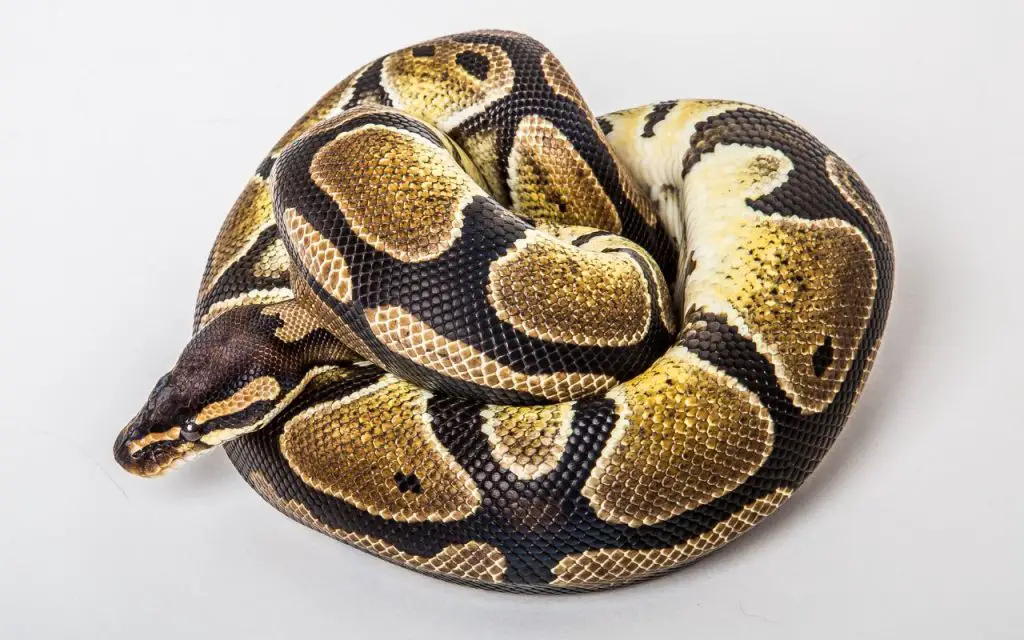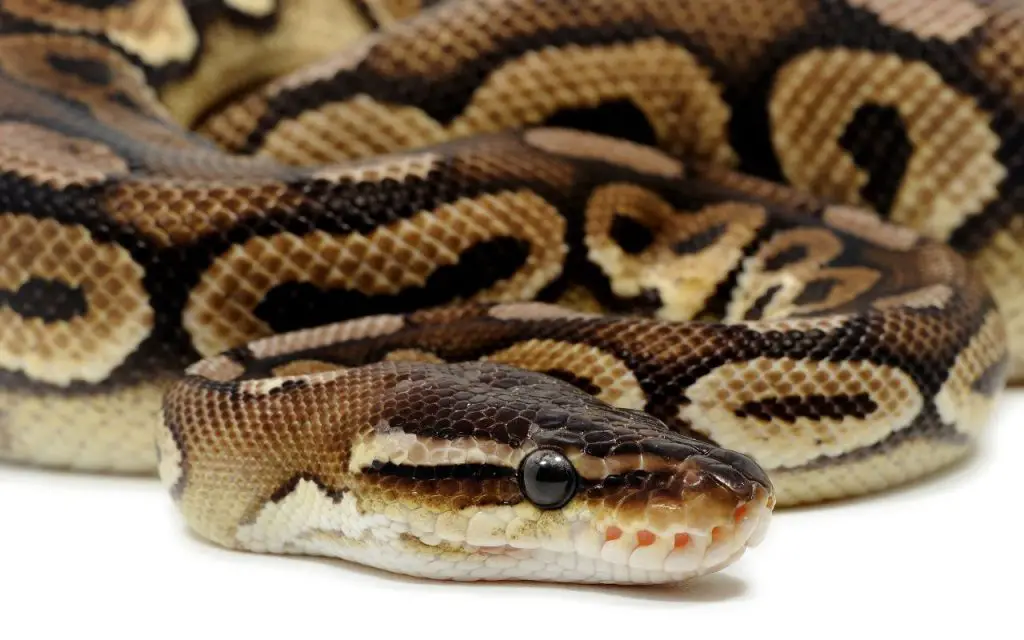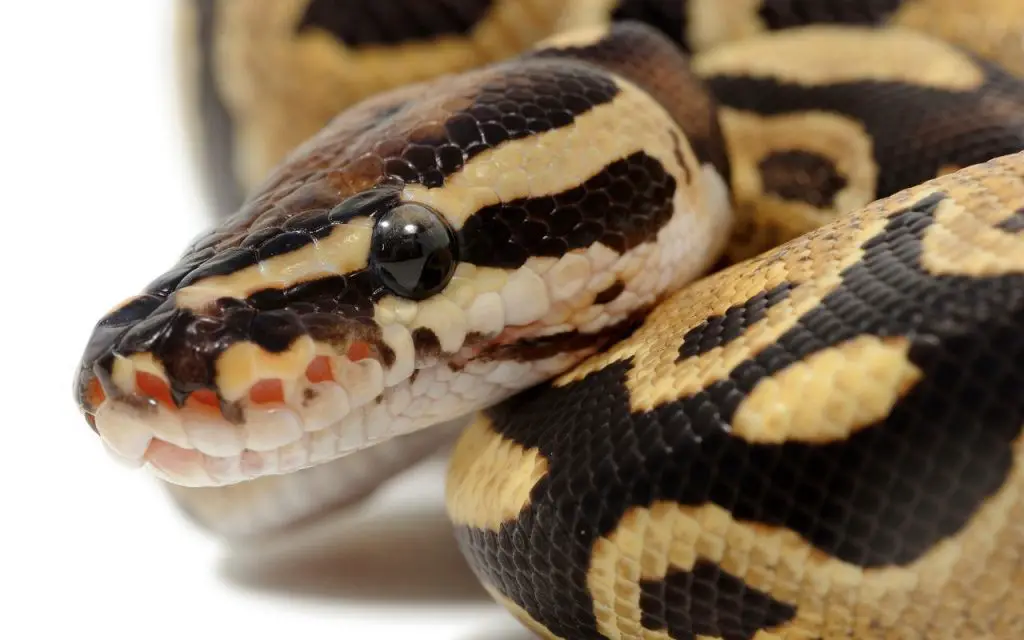Having kept ball pythons for over 25 years, I’ve come across various challenges. Among these, dehydration stands out as a concerning issue for many novice and even seasoned keepers. A well-hydrated snake is crucial for its health and well-being. Dehydration might seem like a minor concern but, if ignored, can lead to severe complications.
Unlike other common illnesses, dehydration is something that can occur any time we drop the ball. It is isn’t a one-off, and varies significantly in severity.
In this post, I’ll tell you how to not only recognise and treat dehydration, but also how to stop it from coming back…
What is dehydration?
Dehydration occurs when a ball python loses more fluids than it intakes, resulting in a deficit in its body. This deficit disrupts the balance of minerals and can affect various biological functions, including digestion and shedding.
Water is an incredible thing: it facilitates most of the physiological processes in a reptile’s body. Even if reptiles are famously good at going long periods without water, they still use it every day. Just because they can go long periods, it doesn’t mean that they should.
What does a dehydrated snake look like?
Being able to identify a dehydrated ball python is paramount. As this species spends a lot of time hiding, it can be hard to pick up on dehydration through behaviour alone. More often than not, you’ll notice changes to your snake’s skin and general appearance.
Here’s what to look out for:
- Wrinkled or loose skin: Gently pinch the skin; if it remains tented or doesn’t spring back quickly, it might be dehydrated.
- Dimpled eyes: Their eyes might appear to have lines, dimples, or creases on them. This occurs from sustained periods of low humidity.
- Reduced activity: A dehydrated snake often becomes lethargic.
- Difficulties in shedding: The snake might have patchy sheds or retain old skin.

Common causes of dehydration in Ball Pythons
In my experience at least, the most common cause of dehydration in Ball Pythons is low ambient humidity. These snakes are adapted to humid, tropical conditions, and spend a lot of time in rodent burrows. In larger, more open enclosures, they can quickly dry out if exposed to low humidity.
Coming in at a close second is excessive heat. If a Ball Python’s enclosure is too warm, it lowers the ambient humidity, as well as the water content of the substrate. Literally everything the snake comes into contact with is bone dry!
Other common causes include:
- Insufficient water supply: Neglecting to provide fresh water regularly.
- Illness: Some health issues might lead to decreased water intake or increased water loss.
- Ectoparasites: Ectoparasites like snake mites and ticks don’t just suck blood, they also take lymph and interstitial tissue fluid. Both of these fluids are high in water, and losing them can cause dehydration.
How to treat dehydration in Ball Pythons
Dehydration sets in slowly in reptiles, then eventually reaches a critical point. Your snake could be dehydrated for weeks, then boom: all of a sudden it looks wrinkled up and extremely ill!
I’m not trying to scare you, just letting you know that you need to act as soon as possible. Take a multi-pronged approach and get things back on track today.
Immediate Steps:
- Hydration soaks: Place your snake in shallow, lukewarm water for 20-30 minutes. Ensure the water isn’t too hot or cold. I prefer to check it with an infrared thermometer gun, and aim for 88-89F (31-31.5C).
- Misting: Gently mist the snake with water, ensuring it doesn’t get stressed.
- Provide fresh water: Make sure a dish of fresh water is available for them. If your snake is also having trouble shedding, try Zilla Shed–Ease or Zoo Med Repti Shedding Aid.
- Consultation: Always consult with a reptile veterinarian if you believe your snake is severely dehydrated.
How to provide water for a Ball Python
As a tropical species, your Ball Python should have fresh water available at all times. Provide it with a sturdy water bowl that would be hard to tip over.
Ideally, the water bowl should be placed near the middle of the enclosure, or on the cool side. If your ambient humidity is stubbornly low, you can try using a larger water bowl, or placing another one in the warm side of the setup.
To keep the water cleaner, I recommend using a bowl with a smooth interior surface. Smooth surface texture reduces bacterial growth by limiting the surface area-to-volume ratio – and therefore the areas germs have to grow on. Porcelain or resin bowls are ideal.

How often to give fresh water
Water must always be available in the enclosure. Ball Pythons will generally drink about once a week (from my observations) and seem to enjoy fresh water. Some of my snakes even go straight over and drink when I give them fresh water, even though I know they’re perfectly hydrated.
It’s best practice to check the water dish daily, replenishing it with fresh water about twice a week. This ensures cleanliness and constant access.
When you give fresh water, make sure you wipe around the inside surface of the water bowl with a sponge or dishrag (not one you’re going to use again for human stuff, obviously!). Doing this eliminates biofilm, which is the slimy build-up of bacteria and their waste products.
The role of ambient humidity in hydration
Like many animals, Ball Pythons loose most of their water through their stools, but also a significant amount through their skin. Between their scales, the skin is soft and fragile, meaning even with their tough scales they still lose some hydration through their integumentary system.
| Ambient Humidity Level | Effect on Ball Pythons |
| Below 50% | Risk of dehydration, shedding issues, lung issues |
| 60% – 65% | Ideal for adult ball pythons |
| Above 70% (outside of shedding cycle) | Can cause increased susceptibility to scale rot and respiratory infections |
The role of substrate humidity in hydration
Substrate humidity can act as a buffer and go a long way to preventing dehydration. This is because of how much time Ball Pythons spend hiding, and resting directly on their substrate.
A substrate like cypress mulch retains moisture well and can aid in maintaining humidity. However, ensure it’s not constantly wet to avoid mold growth or scale rot.
With practice, you’ll be able to feel when substrate is too dry when you pick it up. Coco chips or cypress mulch should have just a slight softness to them: they shouldn’t feel dry and crispy.

Tips for maintaining good humidity
Here’s some of my top tips for maintaining good humidity:
- Misting: Lightly misting the enclosure can increase humidity.
- Water dish placement: Closer to the heating element can increase evaporation and thus, humidity.
- Try using a humid hide: This means a hiding place with some slightly damp sphagnum moss in it. They work great, but not all Ball Pythons will go in them.
- Proper ventilation: Ensure adequate ventilation to avoid stale air but not so much that it dries the enclosure out.
Dehydration in Ball Pythons: Final thoughts…
Dehydration isn’t just about lack of water; it’s a holistic issue that revolves around the snake’s entire environment. From the humidity levels in their enclosures to the substrate type, every detail counts.
With proper care, knowledge, and timely interventions, we can ensure our ball pythons remain healthy and well-hydrated throughout their lives. Remember, the key is observation and proactive management.
Did this article answer your question? If you’re still worried about your snake, check out my post on the signs of a sick Ball Python.

